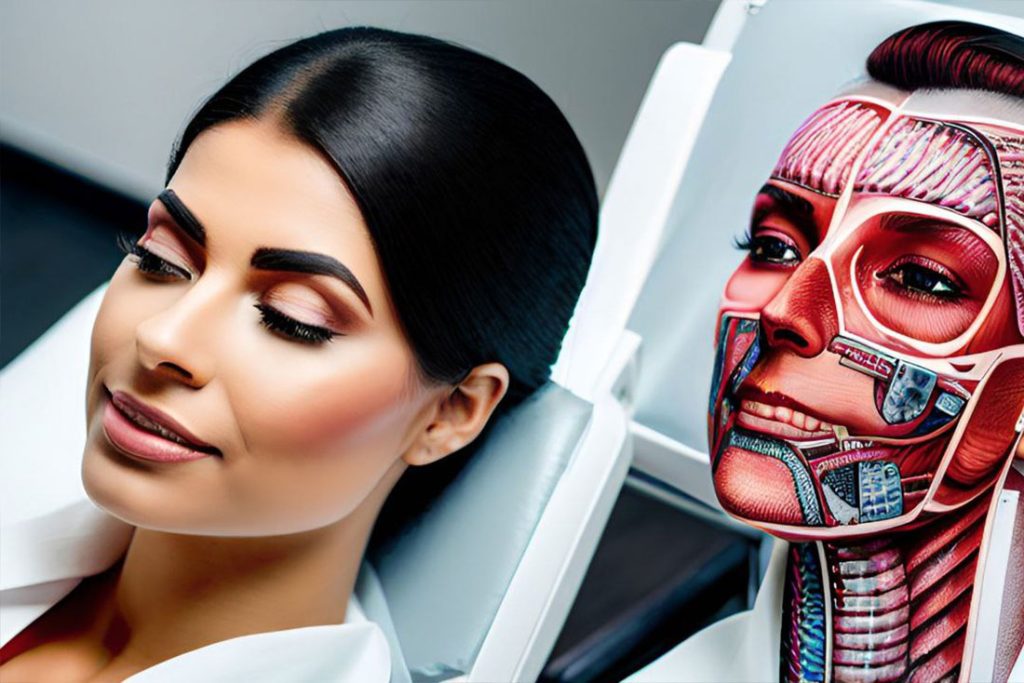The Essentiality of Anatomy and Physiology in Cosmetology: An In-Depth Analysis
The realm of cosmetology is not merely confined to the art of beauty and aesthetics; it also encompasses an understanding of the human body’s underlying structures and functions. A cosmetologist who possesses an in-depth comprehension of anatomy (the study of the body’s structures) and physiology (the study of the functions these structures perform) can provide superior, tailored services to clients while ensuring their overall wellbeing. This article delves into why a beautician’s education should include the study of anatomy and physiology.

Anatomy and Physiology in Cosmetology
The Interplay Between Cosmetology and Human Body Systems
Cosmetology services encompass various parts of the human body, including the skin, muscles, nerves, circulatory system, and bones of the head, face, neck, shoulders, arms, hands, lower legs, and feet. Each of these components plays a crucial role in determining the health of hair, skin, and nails, all of which are within a cosmetologist’s purview.
Thus, a thorough understanding of these body systems can empower cosmetologists to offer services that harmonize with the body’s natural functions and enhance clients’ inherent beauty. Furthermore, continuous education in these fields allows beauty professionals to stay abreast of the latest findings in health, wellness, and safety, which can further refine their practice.
Applications of Anatomy and Physiology in Cosmetology
A deep understanding of anatomy and physiology underpins several cosmetology procedures. Here’s how:
Scalp Manipulations, Facials, Manicures, and Pedicures: These common cosmetology procedures necessitate an intimate knowledge of human anatomy. A comprehensive understanding of the muscular and skeletal systems enables cosmetologists to perform these services with the right techniques and precautions, thereby minimizing the risk of injury and enhancing the service’s effectiveness.
Recognizing Healthy Hair, Skin, and Nails: An understanding of physiology allows cosmetologists to recognize the signs of healthy hair, skin, and nails. Conversely, it also equips them to spot abnormalities that might signify an underlying health issue. While cosmetologists are not licensed to diagnose or treat illnesses, they can refer clients to a healthcare professional when necessary, acting as a vital link in the healthcare chain.
Cosmetic Enhancements: A thorough understanding of facial and cranial bones is integral to creating flattering haircuts, hairstyles, and makeup applications. Knowledge of the face’s anatomical structure can guide the placement of contour and highlights, create an illusion of symmetry, or enhance certain facial features. Similarly, understanding the shape of the skull can aid in crafting haircuts and styles that balance facial proportions, thereby maximizing the client’s aesthetic appeal.
Conclusion
Anatomy and physiology form the bedrock of cosmetology, intertwining closely with the daily responsibilities of a beauty professional. A solid understanding of these fields allows cosmetologists to provide superior, personalized services, maintain health and safety standards, and contribute positively to clients’ overall wellbeing. As the cosmetology industry evolves, embracing this integrated approach to beauty and wellness can set professionals apart, raising the bar for service quality and client satisfaction. It is, therefore, incumbent upon all aspiring and practicing cosmetologists to equip themselves with a solid understanding of anatomy and physiology, thereby elevating their practice and the industry as a whole.






